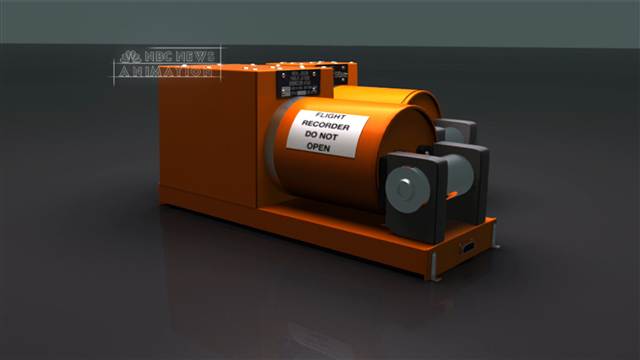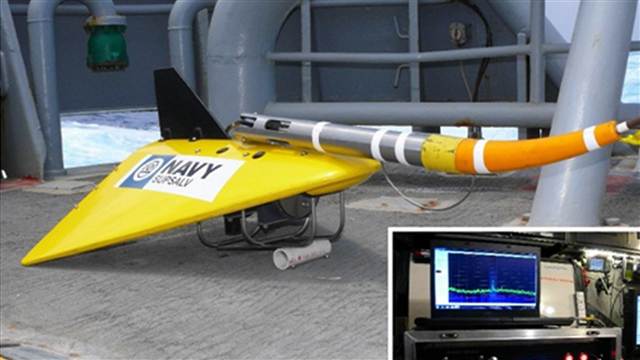
Sergeant Samuel Carson of the Royal Australian Air Force uses advanced camera systems on an AP-C3 Orion aircraft in the hunt for Flight 370 Monday.
By Alexander Smith
The chances of finding Flight 370’s black box recorder will drop dramatically if it is not found before its batteries run out – and that could be as early as next week, according to experts.
The flight data recorder – named “black box recorder” despite being painted orange – could have as little as one week’s battery life left before it stops emitting signals that can be detected by equipment dragged by ships on the surface.
If this technology fails to find the device, rescuers will be forced to begin the even more laborious task of scanning the sea floor to look for man-made shapes, a process every bit as daunting as it sounds.
“Let’s just say that it would be very, very, difficult if it comes to that,” said Bruce Rodger, an aviation expert at the Los Angeles-based firm Aero Consulting Experts.
“It would be a monumental task. By far their best chance of finding the black box is while it is still sending out the pings.”
Black box recorders have a battery life of up to 30 days. Some experts say they can last for longer, but investigators know the point at which they will have to resort to plan B is fast approaching.
Specialist American equipment designed to listen for these pings arrived in Australia Wednesday and is due to reach the remote search area in the Indian Ocean by Friday.
After the pings stop transmitting, the only way to find the black box would be by using sonar equipment to build a map of the sea floor. This would then be analyzed for any sign of man-made objects.
To give an idea of how painstaking this task is, the same technique was used to find the black box of Air France Flight 447, which crashed in the Atlantic Ocean en route from Brazil to Paris in 2009.
Investigators knew far more about that flight than they do about the Malaysia Airlines 777: They found confirmed wreckage within two days of the plane going down, and the crash site was on the aircraft’s flight path, rather than thousands of miles off course.
But even so, they failed to find the black box until almost two years later and the operation cost around $40 million.
“In the Air France flight they used a sonar array towed by ships going back and forth, building a map of the sea floor,” Rodger said. “It’s kind of like mowing a really large lawn.”

The hunt for Flight 370 threatens to eclipse even this epic salvage mission.
Geoffrey Thomas, publisher of Airlineratings.com, told The Associated Press that this search is “the most complex, the most difficult in aviation history.”
“The weather in this part of the world is far more difficult than that experienced in the search for [Air France] 447,” he said.
And it is not just the weather – the search for Flight 370 contains far more variable unknowns.
“This is a much bigger area to start with. Then, we don’t know the airspeed, the trajectory it hit the water, whether it glided after running out of fuel, and that’s before we consider wind drift or ocean currents,” he said.

Furthermore, if the jet impacted at high speed it could have broken “into a thousand pieces,” Rodger added, citing a the example of Swissair Flight 111 that crashed after a fire off Nova Scotia in 1998.
The New York-to-Geneva flight struck the ocean at an estimated 355 mph and with a force of 350g, far more than any human has ever survived. This caused the aircraft to completely disintegrate on impact, with most of the pieces immediately sinking to the bottom.
In this case, however, a Canadian submarine found the black box’s locator pings within two weeks because the jet crashed in far shallower water, a depth of about 180 feet according to a report by the Transport Safety Board of Canada.
The Associated Press contributed to this report.
Courtesy: msn news

Leave a comment